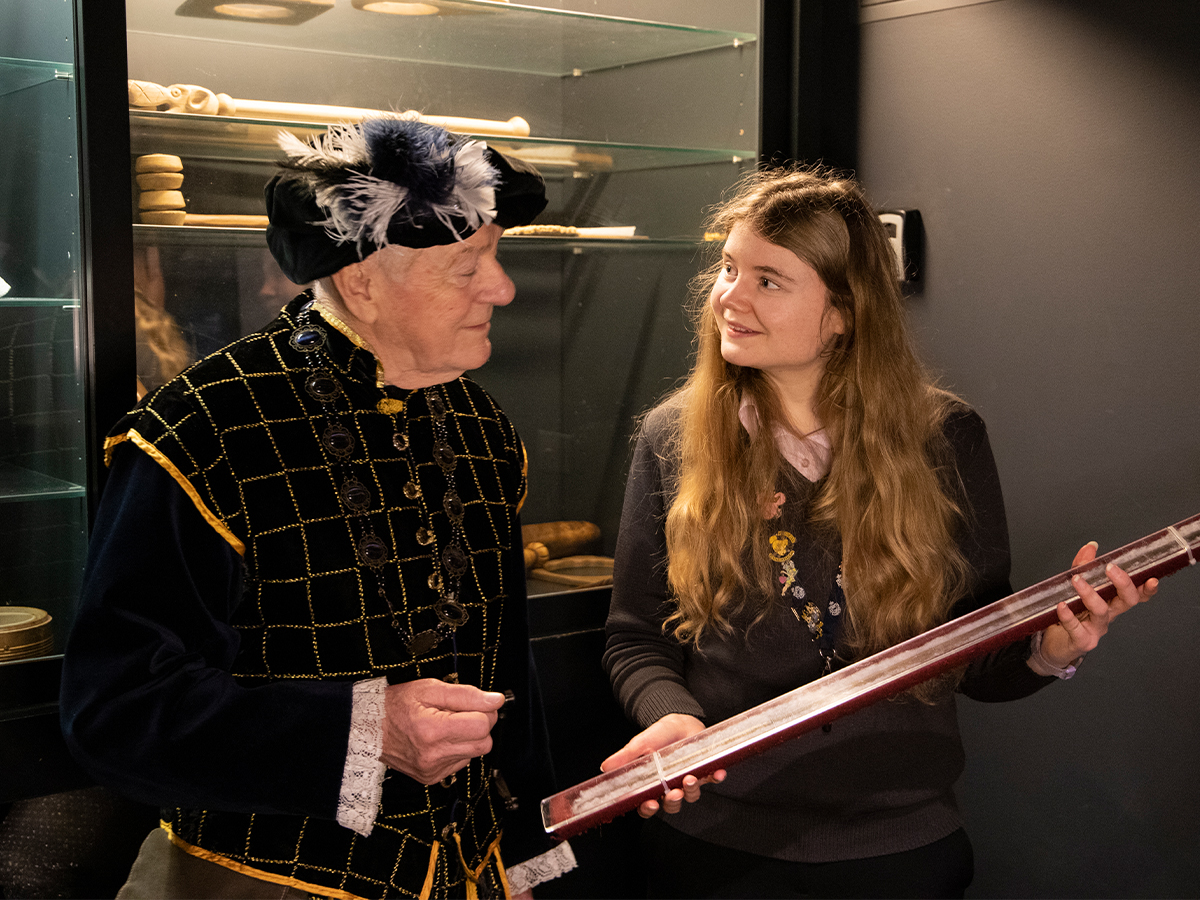PHD Opportunity
Bridging Past and Present: Correlative Multimodal Materials Analysis of the Mary Rose Hull
Applications are invited for a fully-funded three year PhD to commence in April 2026.
The PhD will be based at the University of Portsmouth and carried out in collaboration with the University of Southampton. The supervisory team at Portsmouth (Dr Charles Wood, Dr Tarek Teba and Dr Jovana Radulovic ) will work alongside academic collaborators at Southampton, drawing on their strengths in maritime archaeology, geomatics and digital heritage data to ensure the project benefits from the wider interdisciplinary context of the partnership. External supervision will be provided by Eleanor Schofield at the Mary Rose Museum.
Successful applicants will receive a bursary to cover tuition fees for three years and a stipend in line with the UKRI rate (£20,780 for 2025/26).Bursary recipients will also receive £1,500 p.a. for project costs/consumables.
Costs for student visa and immigration health surcharge are not covered by this bursary. For further guidance and advice visit our international and EU students ‘Visa FAQs’ page.
This funded PhD is only open to new students who do not hold a previous doctoral level qualification.
The work on this project could involve:
- Apply advanced multimodal imaging (micro-CT, XRF, spectroscopy and EM) to one of the world’s most iconic archaeological artefacts — the hull of the Mary Rose
- Integrate structural, chemical and historical datasets to reveal how a 16th-century warship has changed over five centuries of burial, recovery and conservation
- Work directly with the Mary Rose Museum’s conservation scientists, gaining rare access to physical samples, historical records and long-term environmental monitoring data
- Generate evidence that directly shapes conservation decisions for the Mary Rose Trust and establishes transferable methods for protecting other heritage collections
Project description
The Mary Rose hull has undergone extensive conservation following centuries of submersion and subsequent exposure in a controlled museum environment. A range of techniques (micro-CT, XRF, XANES and physical monitoring of movement and moisture content) have been used at different stages, but these datasets have largely been analysed separately. A key challenge now is to correlate structural, chemical and environmental information across scales and over time, to better understand ongoing risks and optimise conservation strategies.
This project will address that challenge by combining new microscopy and imaging experiments with the integration of existing datasets. You will acquire and analyse micro-CT, XRF and complementary spectroscopic and electron microscopy data on selected regions of the hull or associated material and will develop workflows for registering and visualising multimodal datasets in a common spatial framework. By comparing these integrated datasets with historical measurements, the project will provide new insight into degradation mechanisms, the effects of past treatments, and the current stability of the hull.
You will receive training in advanced X-ray imaging, electron microscopy and data analysis, and will work closely with both the University of Portsmouth’s Future Technology Centre and the Mary Rose’s conservation team. The methodologies developed will be directly relevant to other maritime and wooden heritage collections, providing broader impact within heritage science.
General admissions criteria
You’ll need a good first degree from an internationally recognised university (minimum upper second class or equivalent, depending on your chosen course) or a Master’s degree in an appropriate subject. In exceptional cases, we may consider equivalent professional experience and/or qualifications. English language proficiency at a minimum of IELTS band 6.5 with no component score below 6.0.
Specific candidate requirements
We welcome applications from candidates with a background in one or more of: physics, materials science, mechanical or civil engineering, conservation science, heritage science, chemistry or a closely related discipline.
Experience in at least one of the following will be advantageous:
- X-ray imaging (e.g. micro-CT), electron microscopy, or related microscopy/characterisation techniques.
- Analytical spectroscopy (e.g. XRF, XANES, FTIR) or materials characterisation.
- Scientific computing, image analysis or data visualisation (e.g. Python, MATLAB, or similar tools).
An interest in heritage science and working at the interface between experimental measurement, data integration and real-world conservation problems is essential. Prior experience with heritage materials is desirable but not essential; full training will be provided
How to Apply
We’d encourage you to contact Dr Charles Wood (charles.wood@port.ac.uk) to discuss your interest before you apply, quoting the project code SEM50780126.
When you are ready to apply, you can apply at the link below. Please note that email applications are not accepted.
Find out more